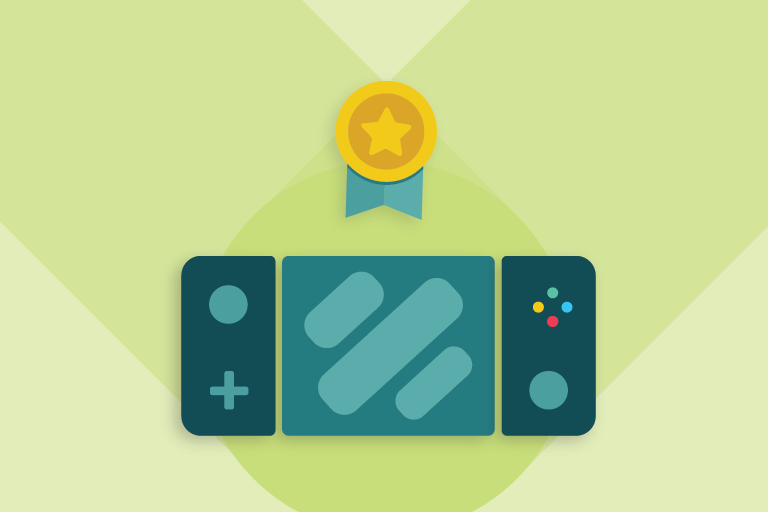Even if you’ve never encountered the term before it’s likely you’re already familiar with gamification. Whether you’ve finally remembered to get that same cafe loyalty card stamped enough times to get a free coffee, made a conscious effort to hit 10 thousand steps a day, or found yourself being bullied into keeping up with your Japanese lessons by an Owl in your phone, that is all gamification in action.
“Gamification is 75% Psychology and 25% Technology.”
Gamification is the use of game mechanics and design to make a non-game activity more engaging. In the promotion space this could involve awarding a customer points for each number of dollars purchased, a discount for referring another customer, or even giving them the option to play a trivia game at checkout to win a bonus discount. Whether simple like American Airlines’ pioneering air miles loyalty program or complex like Nike’s social run tracker app Nike+, the guiding principle of retail gamification is simple: make an activity more game-like to boost customer experience and incentivize interaction.
While it’s easy to grasp the basic concepts behind gamification and clear to see how it can open the door to innovative promotional campaigns, it’s not a process that can be entered into lightly. There’s a process to implementing quality gamification and serious attention must be paid to each step.
Five Part Mental Model for Gamification Success
Before you start on any gamification or promotion strategy, the first thing to identify is the end goal. Is it simply to increase retention—getting a repeat purpose, or getting a user back into your app—or are you trying to incentivise specific behaviours?
Once you know the end goal, you need to think about five things:
- Key milestones on the journey towards that goal
- Potential interventions to reward and reinforce progress
- Areas where social reinforcement makes sense
- Sensible scaling of difficulty
- Potential addition of side challenges or bonuses to hold interest
Creating cohesive, quality gamification is a serious investment but it’s one well worth considering. More and more businesses are incorporating game-like elements as key pillars of their promotional strategy.
Marketing Investment in Gamification
According to the World Federation of Advertisers, 32% of marketers reported that they had invested in gaming in 2019. The pandemic-driven jump to online retailers skyrocketed this figure by almost 100% to 62% in 2020. The same survey indicated 108 senior marketers based in Asia reported a significant number of non-gaming brands investing in more advanced forms of gaming communication, with 36% planning to add gamification elements to their webstore or social media channels, 34% intending to market their brand in games, and 21% expressing serious interest in commissioning video games of their own.
Key Examples of Successful Gamification
Many companies have taken this to the next level. KFC has experimented with a Fruit-Ninja style game in Japan called Shrimp Attack. Customers can play in a specific location to get immediate discounts on their future purchase. Stride Rite challenged users to try on shoes in-store while playing a Dance-Dance-Revolution-style game. The results showed a healthy conversion rate from shoes danced in to shoes purchased but also increased the time parents and children spent in-store.
According to Baymard Institute, an average of 70% of online customers abandon their cart before completing their purchase. Simple gamification works great to tackle issues like this. Online retailers such as Amazon have added a progress bar to their check-out process to help create urgency and remove uncertainty about how many steps are left to complete the purchase.
Gamification is also a great way to tackle longer-term goals like customer retention. The majority of consumers are familiar with loyalty programs, the power of which can’t be overstated, but that’s just the beginning of how gamification can enhance the experience of repeat customers.
Though gamification is an incredibly diverse field, there are certain characteristics shared by any successful implementation. No matter how practical or playful, quality gamification must be cohesive with the larger brand identity while not distracting from the main customer journey.
The ‘When’ is as Important as the ‘How’
The average consumers’ familiarity with basic games means loyalty programs once considered complex are now understood intuitively. Customers of all ages now understand badges are earned for specific activities, collecting a full set of items unlocks a particular skill, expert players are awarded special status, and accumulation of points leads to the next level.
It’s easy to see how this maps to the retail experience: badges and skills could yield coupon codes, customers given special status could be alerted to flash sales before the general public, and of course points/levels could be redeemable for a certain discount on any purchase.
It’s this second component that is key to a successful gamification campaign that converts — having an addictive mechanic is no substitute for wider marketing efforts if it isn’t moving the customer towards the checkout. By analyzing and mapping the touchpoints on the customer journey, and ensuring that customers are re-engaged with timely and effective messaging, gamification moves from a buzzword to a precision tool for customer engagement. You can read Iterable’s great ‘Game On’ guide for more information.
Precision in gamification can also go beyond optimization of the customer journey. If used correctly it can foster a relationship specifically with a business’ ideal customer by maintaining their long-term engagement and interest.
Personalization in Rewards is Key
Being an experienced consumer of a particular business used to mean someone able to navigate the quirks of a poorly-run business (think “No soup for you!“). Now there can be tangible rewards for a customer’s experience in a win-win scenario which also helps businesses launch new products, create product evangelists, and get much more creative with promotion.
Like everything in promotions that feel playful and casual, well-implemented gamification requires a lot of thought and planning. A company looking to gamify should ensure their approach makes sense with the product and their brand, appeals to their core customer base, and doesn’t completely distract customers from the retail experience. It’s a delicate balance but with a great plan and the right tools, taking fun seriously is an incredibly powerful way to stand out in the market, motivate customers and make sure they stick around.
To learn more about how to use gamification to improve your retention and engagement with Talon.One and Iterable, click here.
































